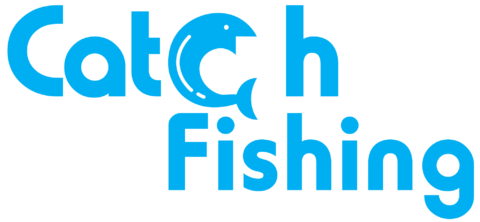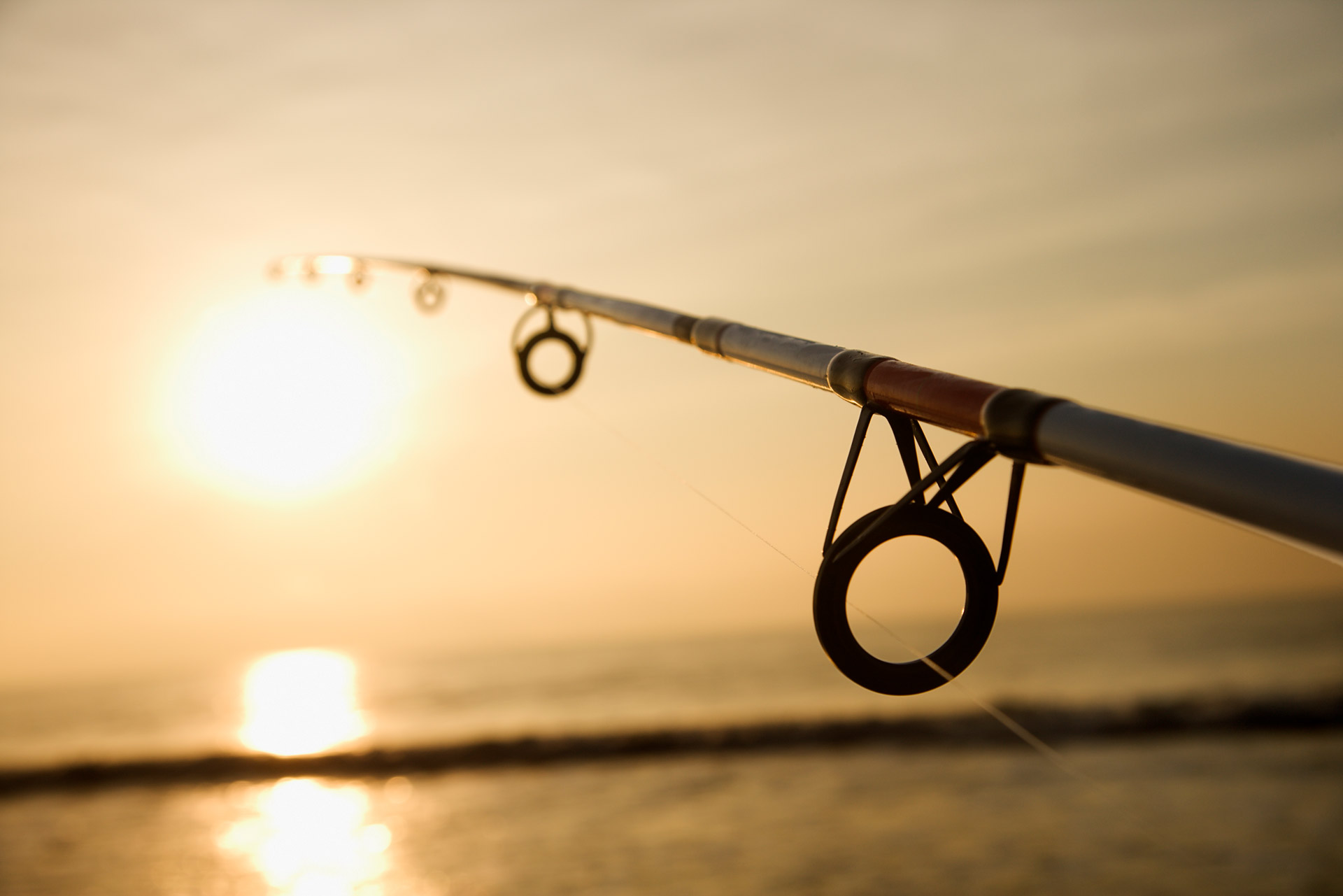Fly Fishing for Trout Beginners Guide (Everything You Need to Know)
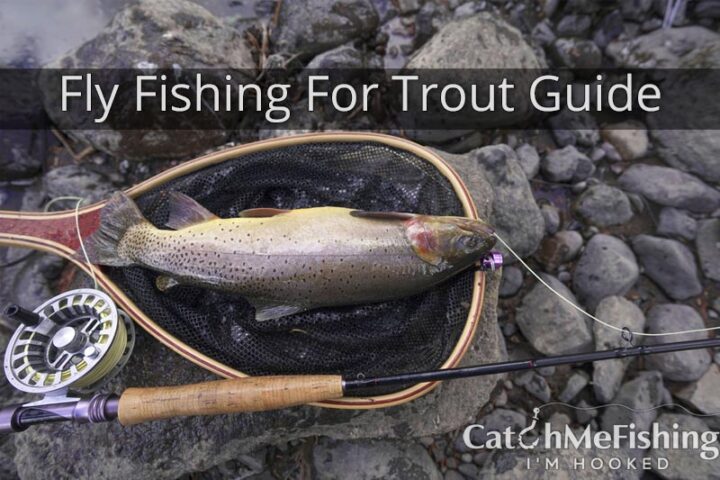
Fly fishing is an ancient art and a very special method of catching fish. The idea of imitating insects on or just below the water surface is as simple as it is brilliant, as many fish species feed on flies and other insects.
Fly fishing for trout in particular is a highly effective way of catching this game popular game fish and millions of anglers all around the world call themselves fly fishermen.
And as fly fishing is enjoying growing popularity, I decided to write a complete and in-depth guide on this wonderful aspect of angling.
So, if you are interested in fly fishing for trout and want to know everything about catching trout, this article is perfect for you!
Where Can You Fly Fish for Trout?
Trout can be found in both moving and still waters, as well as the sea. Hence, you can fly fish for it in all of these types of water.
Many countries will have famous and popular trout rivers, mountain lakes, or coastal areas that attract many anglers and can produce plenty of fish, A majority of trout anglers prefer rivers over lakes and saltwater.
In the UK and Ireland, there are several rivers that offer exceptional fly fishing for trout. Some of the most popular include the following:
- River Frome
- River Itchen
- River Wye near Derbyshire
- River Lyon
- East Lyn River
In the US, some of the country's very best fly trout fishing rivers include:
- White River, Arkansas
- Big Horn River, Montana
- Green River, Utah
- Connecticut River, Vermont and New Hampshire
- Frying Pan River, Colorado
Fly Fishing for Trout in Rivers
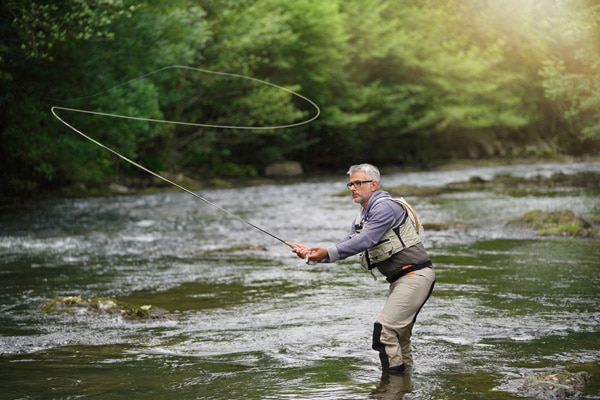
As most people will target trout in rivers, let us now take a closer look at how fly fishing for trout in rivers actually works and go through some of the best tips for this type of fishing.
Trout can be fished for in moving waters throughout most of the year and hence, targeting rivers for trout can often yield very good results for anglers.
Trout, which belong to the family Salmonidae, need moving freshwater environments to spawn in and many of them stay in river systems their entire lives. Here, they will have oxygenated and clean water, as well as plenty of food.
We also have a simple guide on how to catch trout in a river.
Look for Features
As the trout is a predatory fish, rivers also fit them because of all the features they can hide in, behind or under when hunting for smaller prey.
Such features can include the following:
- Deep pools
- Rocks
- Overhanging trees and bushes
- Submerged tree branches
- Water vegetation
- Reeds
It is these features that you should look for when fly fishing for trout in rivers! Every tree branch, ever big rock and every big pool in the river you are fishing in can possibly harbour a trout that is hungry and just waiting for your fly to drift by.
The sight of an approaching trout that has suddenly appeared from behind a rock or a patch of weed and that is about to take your fly on the surface is a really special one!
Fish Stealthily
But in order for a trout to actually go for your fly, you will have to fish as stealthily as you possibly can. Trout are very careful fish that can easily spook, which is why keeping a low profile while fishing for them is never a bad idea.
Especially in clear and shallow water, the trout will be able to spot you and if it does, it can virtually be impossible to get it to take your fly.
So, in order to disturb the scenery and fish as little as possible, you can follow these simple steps:
- Wear camouflaged clothing
- Stand near or behind vegetation on the bank
- Hide behind bigger rocks
- Avoid making loud noises (and talking in general)
- Use the river current to your advantage
Fish Downstream
The last bulletin point is especially useful and effective. It implies placing yourself upstream and dead-drifting your fly a long distance downstream with the help of the river's current.
Not only will you remain completely out of sight, but you can also cover much more water and, possibly, many more tout spots.
If the river bed allows for it, you can do this even more effectively by wearing waders and placing yourself in the river (if it isn't too deep that is).
This way, you can virtually fish from any given spot in the river and present your fly from a perfect angle.
More often than not, however, wading is not really an option in many rivers and you will have to fish from the bank.
Fish Across the River
If you can't fish your way downstream and instead have to fish across the river, try to cast your fly toward the opposite bank. Chances are that trout on the other side of the river won't spot you as easily and hence spook far less than the fish on your side.
Pro Tip: Try to cast upstream and across toward the other side. This will give you a far longer drift and a more natural presentation of your fly on the surface.
Learn how to read a river perfectly.
Don't Strike Immidiately
This is something I had to learn the hard way and hopefully something that you can avoid by remembering this valuable tip. When you get a bite on the surface and you see that trout taking your fly, never strike right away!
The trout will at first only test your fly and will only nibble at it very carefully. If you strike during that first encounter between fish and fly, you will most certainly not be able to set the hook.
Instead, wait those few extra seconds (and that's the hard part, really) and strike first once the trout starts to take off with your fly.
Now, we move on to discussing the flies you should be using for your trout fishing.
What Flies Should You Use for Trout Fishing?
There are really only three main types of flies that you should consider for fly fishing trout. Each of those is fished and presented differently and should be used under the right circumstances in order to improve your chances of catching a trout on the fly.
Dry Fly
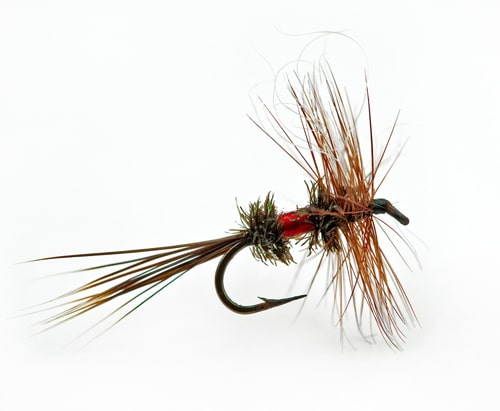
Dry flies are a popular and commonly used type of fishing flies for trout. They are extremely lightweight and will hence float, imitating an insect trapped on the surface. And the trout just love them!
As they will stay on the surface, the presentation of such flies is rather visual, which makes dry fly fishing extremely exciting, as you will literally see the bite happening in real-time.
Seeing the trout take the fly can also help in determining the right moment to strike and set the hook.
Pro Tip: Dry flies are especially effective after rainfall, as there will be lots of real insects on the water surface, which allows your fly to blend in nicely.
Nymph
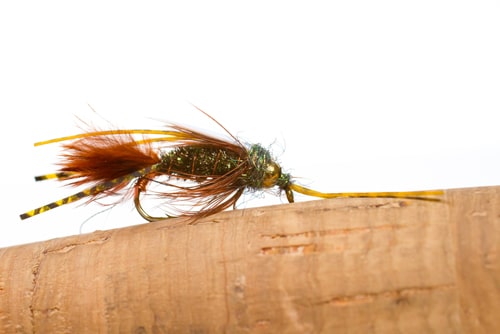
Nymphs are the most effective type of flies for trout, as they are fished just below the surface, imitating insects that are in a stage of their lifecycles where they spend most of their time underwater. Such insects also happen to be the main food source of the tout!
When all else fails, using a nymph can always get you that seemingly impossible bite, as trout feed much more underwater than they do on the surface.
But as you have to fish nymphs below the surface, you will have a harder time detecting bites.
That is why many anglers will use a small float further up their mainline, which will visually signal a tug or take.
Pro Tip: Another way of detecting a bite is by carefully observing your line during a drift. If it suddenly starts to tighten after being slack, you got a fish on!
Streamer
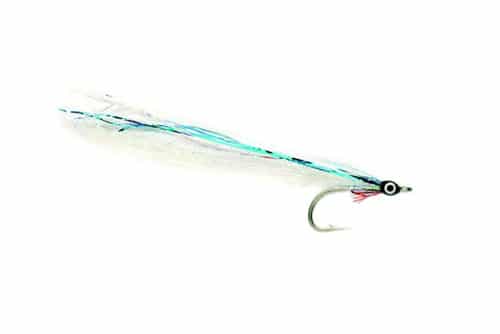
The third category of fishing flies for trout is the streamer. This type of fly isn't really imitating a fly at all, but rather small prey fish that trout will feed on.
It is another fly that is fished below the surface and one that has to be cast out in a similar way that you would cast out a lure.
Once you have cast your streamer, you will have to twitch and pull it back in using your rod and reel. This, in turn, will give the streamer a rather natural movement, making it appear alive.
It is also these movements that will make the streamer highly irresistible to hungry trout.
Pro Tip: Due to the movement and vibration that comes off the streamer, it is especially effective in somewhat darker or murkier waters.
Helpful Gear to Use When Fly Fishing for Trout?
Let us now round off this article with a few helpful gear tips that can make your trout fishing trip both easier and more optimized.
Waders
As mentioned earlier, using waders in water systems that are safe to wade around in can be highly advantageous, as they allow you to fish from any spot and angle.
This also means that you will have the opportunity to reach and fish spots and areas that you simply wouldn't be able to reach from land.
Landing Net
Bringing a short trout landing net ensures that you will safely land your catch and it's definitely something I wouldn't want to be without when fishing.
The compact size and light weight of such nets also means that it won't be a problem bringing it in the water with you, should you be wading.
Polarised Glasses
My last gear tip for you is polarised glasses, which are sunglasses that will greatly reduce the glare from the water surface, letting you see everything both on and beneath the surface.
This is really essential when fishing for trouts in rivers, especially so when using dry flies on the surface.
Hook Remover
A good quality set of hook removers will make your job of landing a trout a lot easier. Trout teeth can be quite sharp, and the bigger fish can cause a bit of damage so hook removers make it easier and safer to remove the hook.
Conclusion
I hope you enjoyed reading this fly fishing for trout guide. If you follow this advice you will see your success and enjoyment multiple tenfold. Check out our What is Fly Fishing? 7 Basic Fly Fishing Steps For Beginners for more fly fishing advice. The most important thing is to have fun and, good luck fishing 🙂


